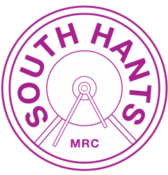A 2021 retrospective. These were the layouts appearing at our exhibition on 20th November 2021. The main exhibition page contains a video of this exhibition.
Ropley 2mm scale, N Gauge
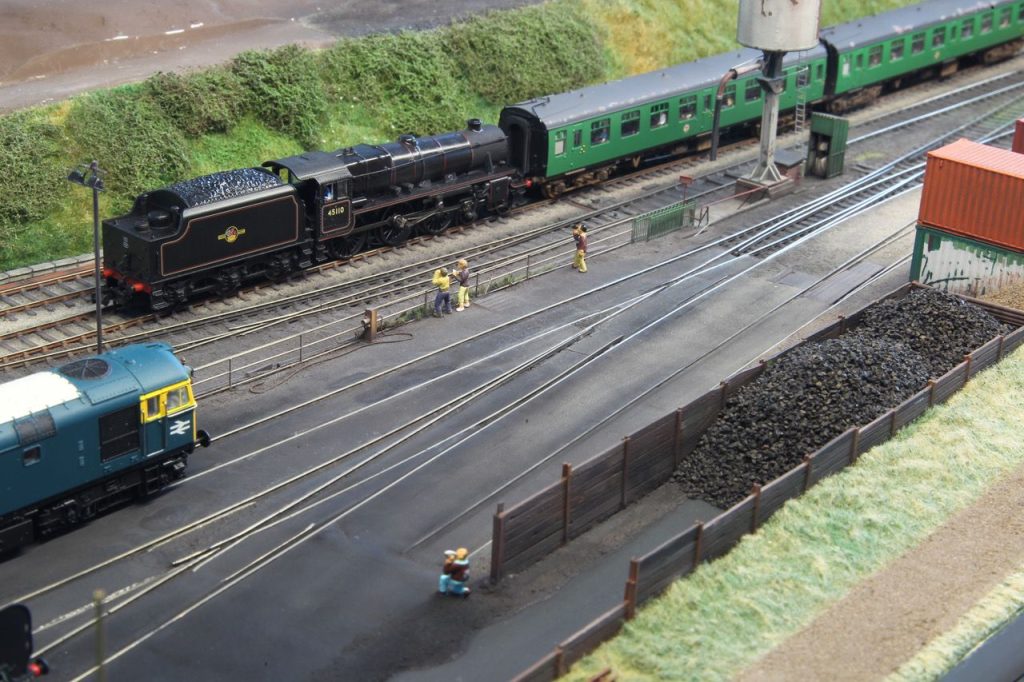
Tom Everitt
Ropley started out life simply as an excuse to run anything that took my fancy, but over time has become an attempt to accurately reproduce a small section of the Mid Hants Railway. Choosing Ropley for it’s relative compactness, interest of the yard & workshops and on the basis that a preserved railway wouldn’t be likely to change as often as a mainline location, it turned out nothing could be further from the truth, with several major developments having taken place since the model was first started. The most notable of these is the addition of the ‘Harry Potter Footbridge”, formally the Kings Cross station footbridge, and the new carriage & boiler workshop.
The rapid change of pace on the line has led to a date range between 2012 – 2016 being set for the model, however stock from outside these periods may appear, with the only caveat being it must have run on the line at least once!
Lower Exbury (4mm scale, P4 Gauge)
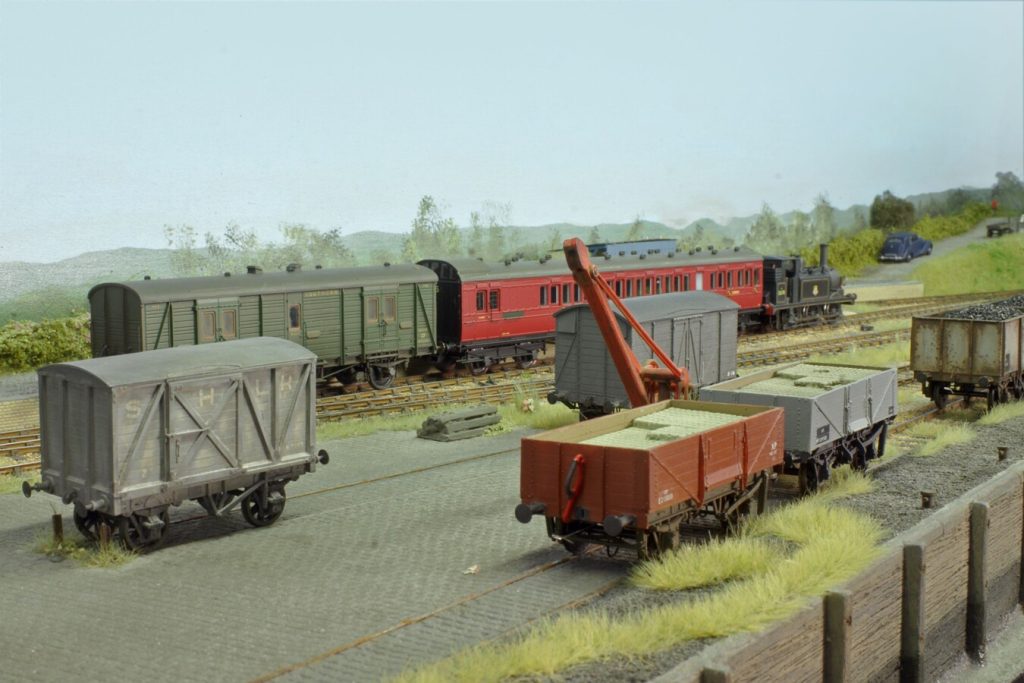
Alison Barker
‘Lower Exbury’ represents the terminus of the (fictitious) South Hampshire Light Railway in July 1952. Such a line could have been built from Totton to Exbury, close to the Beaulieu and Exbury estates, with grandiose ideas to extend across the Solent to the Isle of Wight. ‘Lower Exbury’ is a twig off this line, serving a river wharf and (off-scene) brickworks. It became the terminus when the proposed IoW extension was dropped. Basic passenger facilities were provided, with loco servicing and stock sidings being provided at Exbury station nearby. On nationalisation in 1948 the Company became part of the Southern Region of British Railways and by 1952 the future is uncertain, as the local brickworks is facing closure and remaining traffic is relatively light.
Steve Flint/Railway Modeller
William Smith's Wharf (2mm finescale)
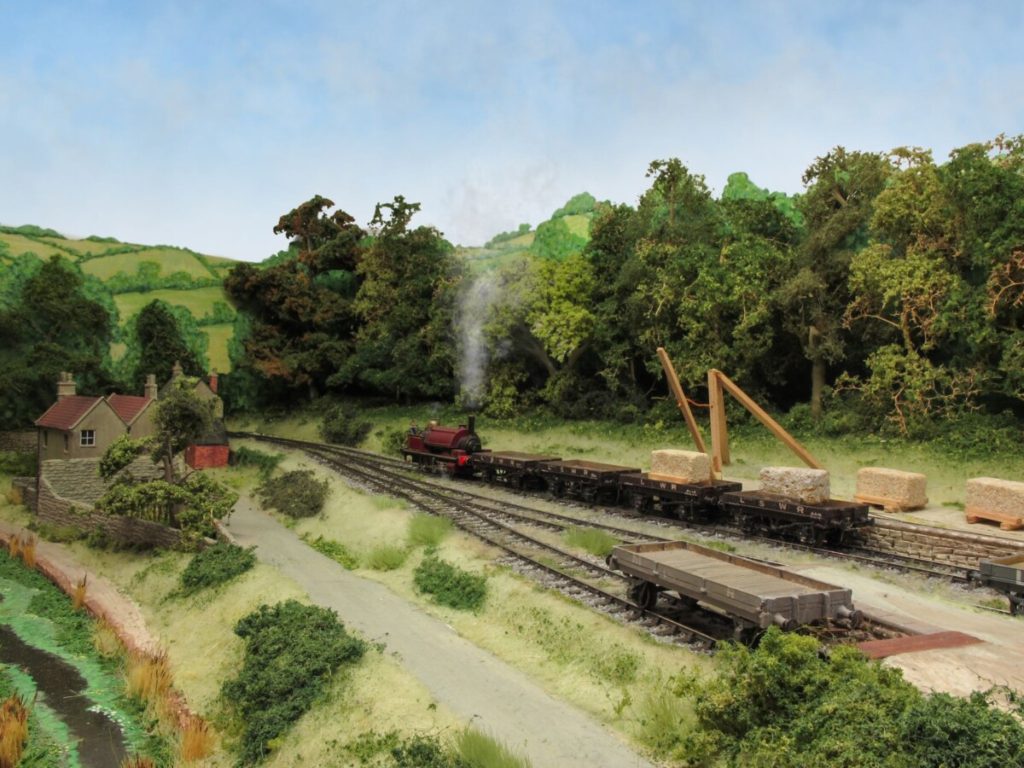
Jerry Clifford
The ‘Wharf’ is the latest, and smallest, addition to the series of layouts based on the fictitious North Somerset Light Railway (NSLR) as it might have looked in the 1920s. The name derives from William Smith (1769-1839), one time surveyor to the Somerset Coal Canal (SCC) and father of English geology. In 1812 Smith opened an ill-fated quarry at Kingham on Combe Down along with a tramway leading to a wharf at Tucking Mill. In reality the venture failed contributing to Smith’s bankruptcy due to serious faults in the rock. Needless to say, in my version of history the venture was a great success such that when the NSLR arrived in 1905 it justified a siding and wharf to transport the valuable, high grade, Oolitic limestone all over the country.
The model, all two feet of it, can be used as an extension to my Tucking Mill layout or exhibited in its own right. As usual inspiration is taken from real locations, the wharf scene is a nod to the stone wharf at Biccslade in the Forest of Dean whilst the scene at the front represent the bridge and canal cottage at Monkton Combe on the SCC.
Lighterman's Yard (2mm/ft, 2mm finescale)
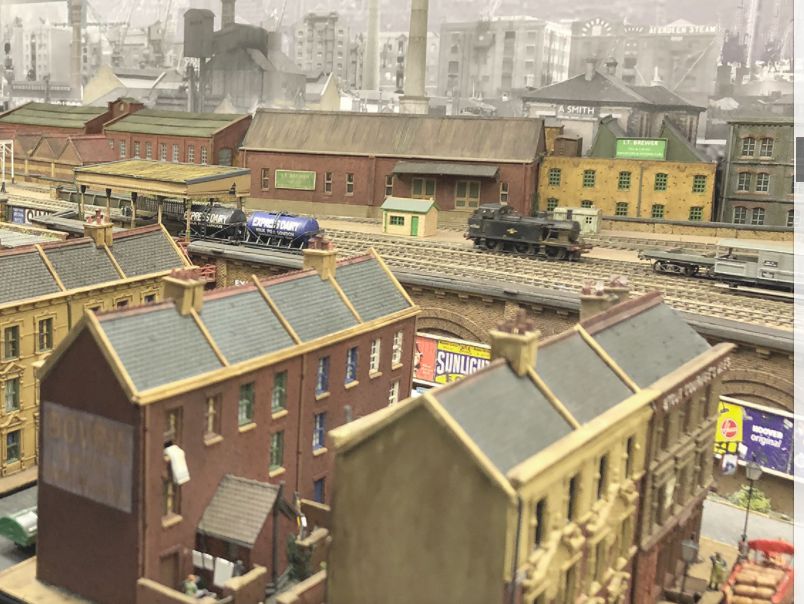
2mm Kent and Essex Area Group
The layout represents a small fictitious goods yard, somewhere in South East London in the late 1950’s early 1960s.
It is still a work-in-progress, construction having occupied members of the 2mm Association Kent & Essex Area Group for many years.
The track is hand built, using code 40 rail soldered to PCB sleepers, with etched chairs. Stock is supplied by various group members and is a mixture of Ready to Run N gauge stock converted to 2mm Finescale and kit or scratchbuilt 2mm Finescale models. The buildings are a mixture of heavily modified proprietary kits and scratch built.
Portsea (reminiscences of Portsmouth) (3mm/ft, 12mm gauge)
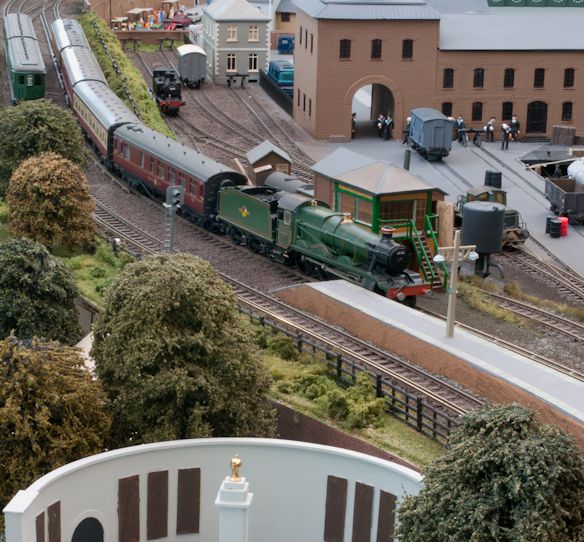
Paul Hopkins and John Wakenham
The current Southern Coastway and South West Portsmouth Direct train services terminate at Portsmouth Harbour with ferry connections to the Gosport and the Isle of Wight. The lines to the east of Portsmouth were electrified in 1938, the non electrified services were operated with diesel units and also loco hauled which makes interesting operation as the Harbour station had no run-round facilities for locomotives
This model is built in response to the 50th anniversary celebrations of the 3mm Society, and is a portrayal of the Harbour station and the approaches to it as it was operated in the post nationalisation era using locomotives and rolling stock typical of the period. Various features of the locality have been incorporated into the model, specifically the war memorial, Commercial Road bridge, Dockyard gates and part of the Semaphore Tower building. An adaptation of the Royal Naval dockyard is included in the model, although with some modeller’s licence, includes its internal rail system and access to the national network from the “town” station.
Cheddar (4mm scale, P4 Gauge)
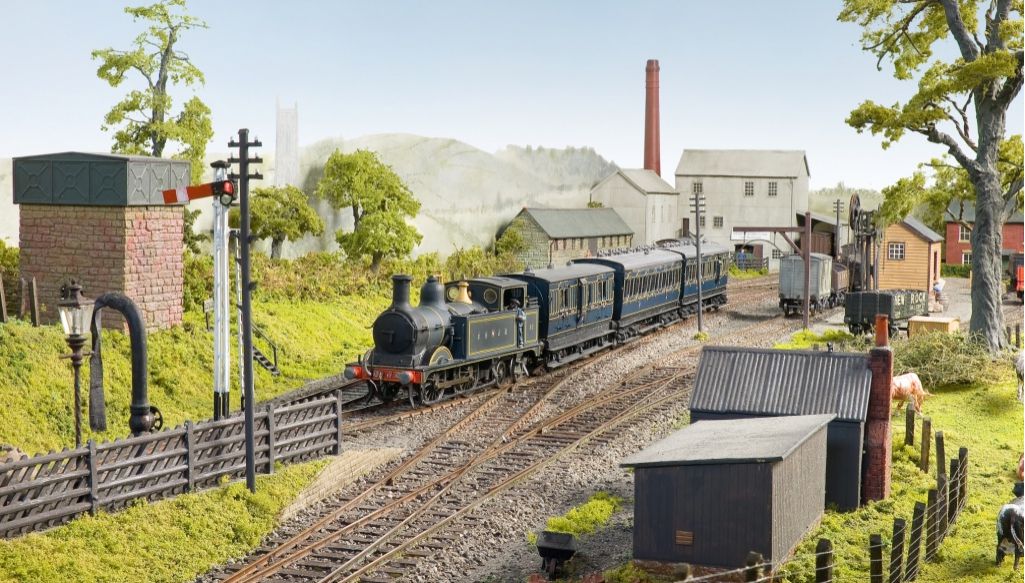
Simon Challis
The Light Railway Act of 1896 meant railways could be built and operated at a lower cost; the line speed was 25mph, not a lot slower than a normal branch.
The Somerset & Dorset Joint Railway proposed such a line to Cheddar to tap into its trade in tourists visiting the cliffs and caves, market garden produce, especially strawberries, and of course Cheddar cheese. After the line opened the quarries persuaded the S&D to rail connect them through the station so they could ship larger quantities of stone.
The line was never built. The scene shows Cheddar S&DJR as it might have been in the 1920’s with stone, coal, general merchandise and passengers arriving and departing. The Cheddar Valley Oxide & Ochre Mill was built after the line opened.
Eastwood (4mm/ft, P4 gauge)
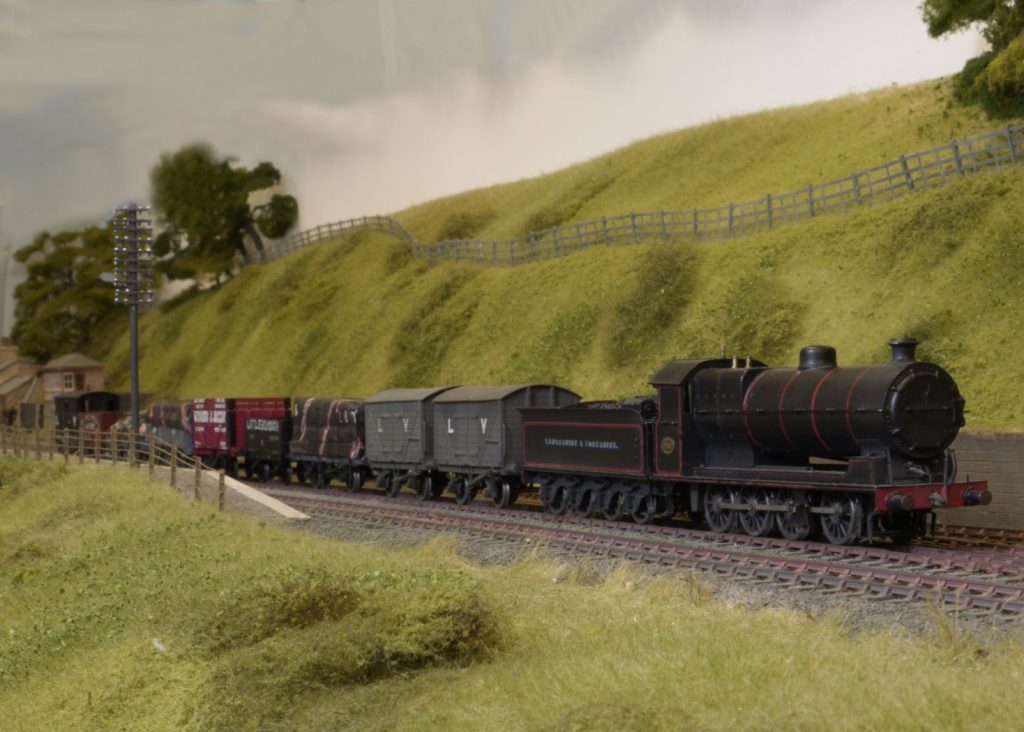
South Hants MRC
In its heyday it was a busy place with local and long distant trains stopping. Many people used the station to commute to factories in Rochdale and further afield to Manchester.
The station is on a double track mainline with staggered platforms. It had a small yard with trailing connections from both up and down lines. It also had sidings to a small mill and a loop serving coal drops which we believe met both domestic and industrial demand for coal. Behind the coal drops, the scene is dominated by Cockden Mill (known locally as Dan Crabtree’s). It was a mixed mill covering most of the textile processes, but especially dyeing.
Find out more about the real Eastwood and its station at the Charlestown History Group.
The layout represents Eastwood as it was shortly after the Great War
Copperwort (4mm/ft, 00 gauge)
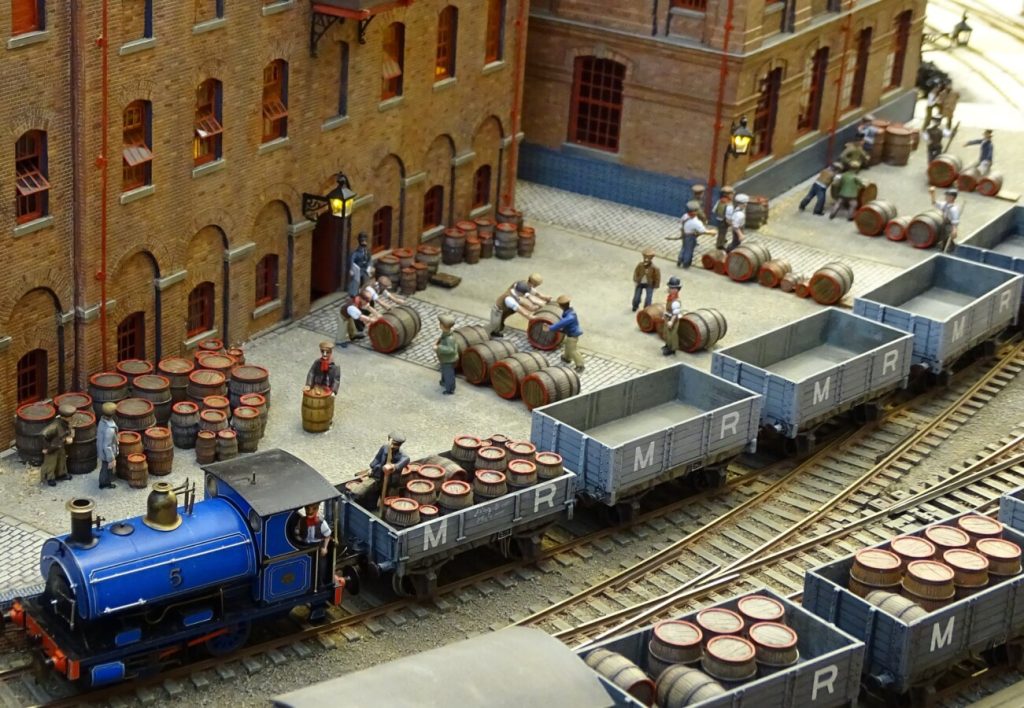
Pete Goss
Our period modelled of the early 1900’s represents the high point of the brewing industry in Burton on Trent, extremely busy with the bigger breweries establishing their potential with the Midland Railway network with the smaller breweries muscling in between them.
To add substance to what is essentially a little-known small brewery company I have given it a few of its own 0-4-0 locomotives to support the Midland Railway locomotives running through. The layout includes a track plan based on the much larger Worthington’s arrangement to accommodate the numerous Midland Railway and Great Northern open wagons and outside framed MR vans. The buildings are based on the breweries of Bass, Ind Coope, Trumans and others, all based in and around Burton on Trent.
Photograph: Pete & Julie Goss
Laramie Engine Terminal (7mm/ft, 0 gauge)
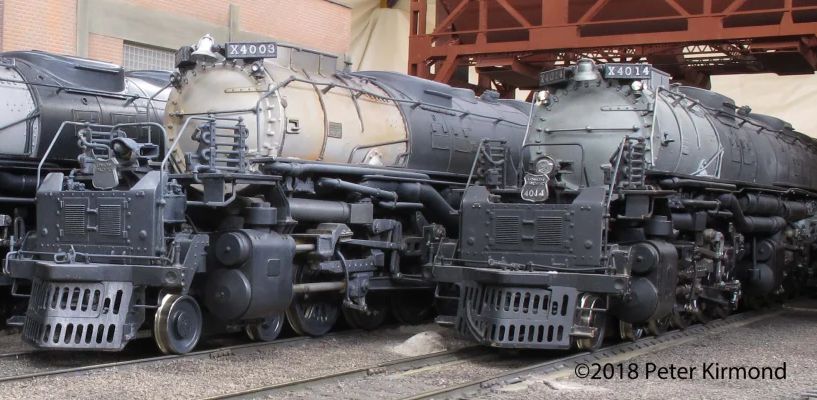
Peter Kirmond
Laramie Engine Terminal is an 0-scale model railway layout depicting a part of the Union Pacific Engine Terminal at Laramie, Wyoming as it was in the late 1950s.
In the hot summers of 1957 & 58, the Union Pacific’s Big Boys (amongst the largest steam locomotives ever built) were brought out of store for their final moment of glory pulling massive trains from the Californian fruit harvest east over Sherman Hill between Laramie and Cheyenne in Wyoming. This layout aims to capture what it was like fuelling, watering and turning these monster beasts for this 50 mile each way shuttle.
Kinmundy (4mm scale, EM Gauge)
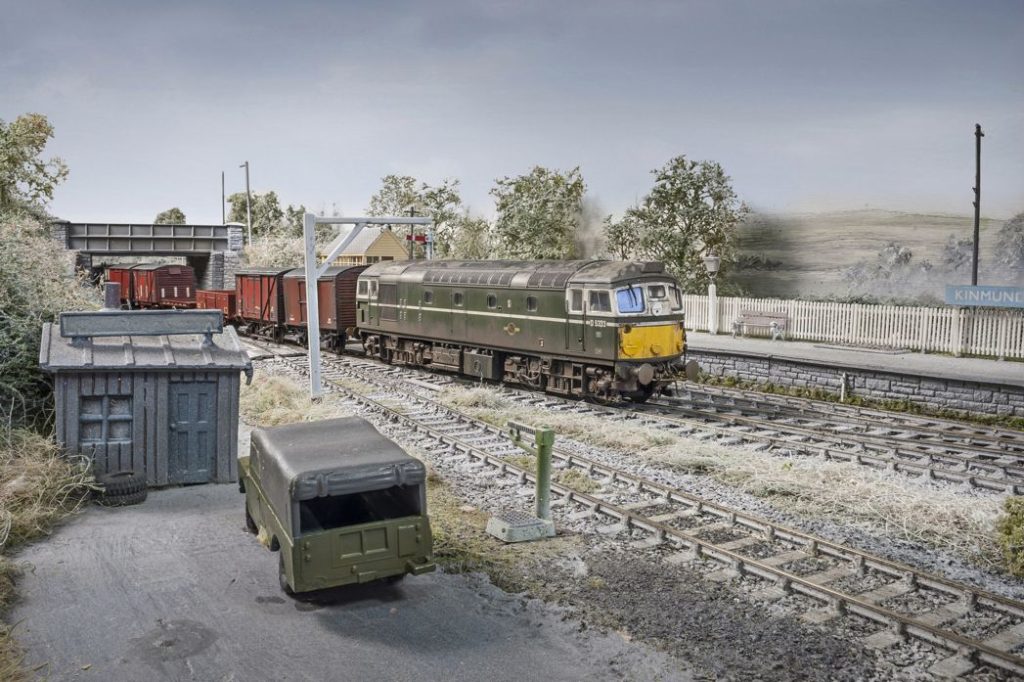
During the early part of 1915, the Admiralty located and began construction of an airship station close to the village of Nether Kinmundy, some eight miles west of Peterhead, ostensibly for U-Boat reconnaissance purposes to help protect the Fleet at Scapa Flow from potential air and sea-based attack. To aid construction and subsequently service the facility, a 3½ mile-long branch-line was constructed from a junction with the Peterhead line at Longside.
Although in effect a station that never existed in reality, imagine that the branch was in fact a more conventional affair serving both the needs of the region and that, under the RAF, the Base had thrived and survived long enough to become both an air-sea rescue and helicopter training facility. This, in conjunction with local industry has been enough to ensure survival of the branch into the1960s, though by the wintery period depicted the railway was living on borrowed time.
The layout is a carefully observed and crafted creation of an ex-Great North of Scotland Railway branch terminus, set in the twilight of its existence. Each structure was selected from prototypes in the same area, then combined and scratch-built to suit the location and the imagined history of the model.
Photo: Chris Nevard/Model Rail
Widley and St George (4mm scale, OO Gauge)
South Hants MRC
One for our younger visitors. Come and drive trains pulled by Thomas, Percy, Gordon and more of their friends
